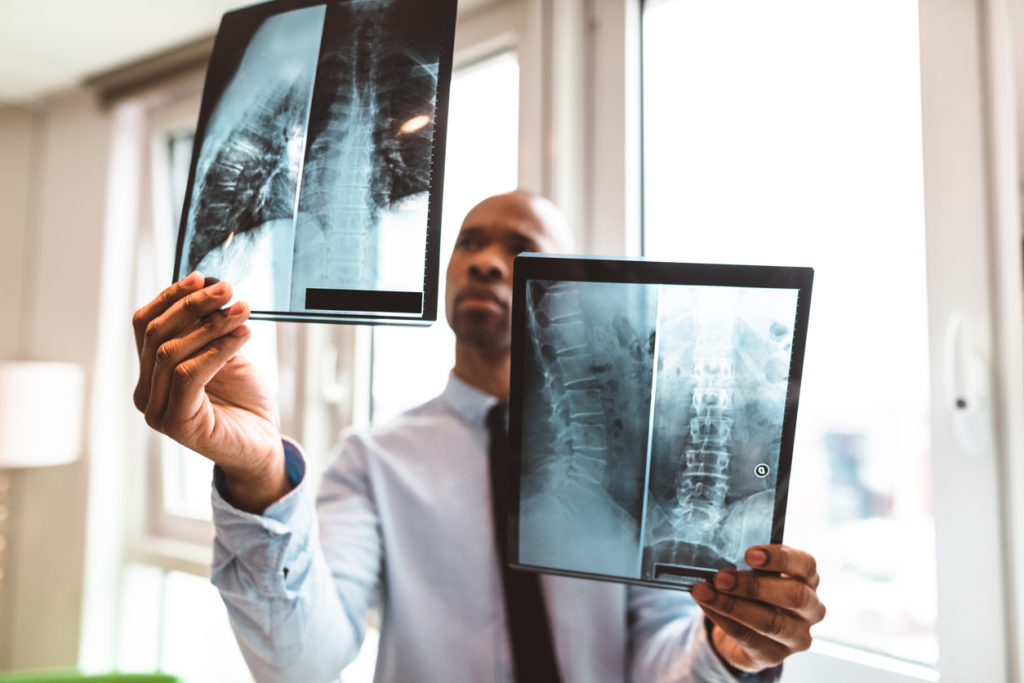
An estimated 80% of Americans have had or will have back problems at some point in their lifetime. Back pain is usually centered in the lower back, particularly due to degeneration and deterioration of the lumbar spine. The rates at which people complain of lower back pain have actually risen quite dramatically, despite the decline in manual labor.
It seems that, given better care and awareness around the issue, more people are seeking help for their backs today than ever before. And for a good reason. Lower back pain can be caused by various spinal problems, including those caused simply by aging, injury, or genetics. While we can’t fix every spine, medical science has come a long way in helping diagnose, address, and alleviate lower back pain and bring back a substantial amount of quality of life.
The faster people seek treatment, the faster they can get back to living normal lives, continuing their work unimpeded, and spending time with their families pain-free. Among the many ways chronic back pain may sneak its way into your life is spinal stenosis. Lumbar spinal stenosis usually occurs in patients over 50 who are at risk for or are already diagnosed with osteoarthritis.
Understanding Spinal Stenosis
Spinal stenosis is caused by narrowing the spinal canal, where the spinal cord and nerve roots are located. This narrowing pinches the nerves and cord in the lower back, causing many issues, including numbing, muscle spasms, serious pain, and more. Spinal stenosis is quite common and almost always caused by “wear and tear.” The older the body gets, the more it deteriorates, and one of these forms of deterioration is a weakening of the bones in the spinal column.
Other possible causes include bulging discs (typically caused by an injury or excessive physical stress and accumulated trauma) and thickening of the ligaments and materials between the spine’s vertebrae. Osteoarthritis is the most common underlying cause of spinal stenosis, affecting more than 31 million US adults per year, usually over the age of 60, and occurs in the:
- Joints
- Ligaments
- Tendons
- Joint lining
- Cartilage
Nearly half of aging adults experience osteoarthritis in the knees, hands, and hips. Less known, however, is the effect osteoarthritis has on the spine. A deterioration in the bone and ligaments of the spinal cord will lead to spinal stenosis, causing a significant amount of pain and a severe loss in mobility, strength, and quality of life.
Spinal stenosis typically occurs in two points of the spine: the cervical spine and the lumbar spine. The cervical spine is the portion of the spine in the neck, while the lumbar spine is your lower back. It’s more common for people with spinal stenosis to be struggling with lumbar spinal stenosis.
Lumbar Spinal Stenosis Signs and Symptoms Not to Ignore
Lumbar spinal stenosis refers to a pinching of the spinal cord and several nerve roots inside the spinal shaft. This can result in several different symptoms, varying in severity based on how far along the stenosis is. If you experience any of the following symptoms, it’s highly advised that you visit a doctor and ask for a thorough screening for any spinal problems:
- Noticeable weakness in the foot or leg.
- Numbness or tingling in the foot or leg.
- When standing, cramping in the leg muscles relieved when sitting or bending forward (elongating the spine).
- Severe back pain (often requiring you to take breaks from daily activities, leaning over or sitting down to relieve pain, etc.).
These symptoms occur because the nerves in the leg and foot are directly connected to the central nervous system via the spinal cord, particularly through the lumbar spine. The lumbar spine often deteriorates faster than the thoracic spine (upper back), perhaps because the upper back is generally more resilient to damage due to its critical role in stabilizing the rib cage and working to protect the organs of the human body.
Why Lumbar Spinal Stenosis Occurs
The most common cause for lumbar spinal stenosis is wear-and-tear, causing weakening of the backbone and the growth of bone spurs that affect the width of the spinal canal. However, it isn’t the only cause. Other causes include:
- Genetics — Some people are born with a narrow spinal canal, which can get worse with time.
- Disc herniation — Spinal discs are filled with fluid to provide a cushion between each vertebra. If a disc ruptures, the fluid can press on the nerves and spinal cord in the spinal canal.
- Tumors — Abnormal growths that can form within the spinal cord. Even if benign, a tumor can lead to severe consequences if it pushes against the spinal cord.
- Injuries — Dislocations, fractures, and cracks in the vertebrae and discs of the spine can lead to lumbar spinal stenosis through displaced bone and tissue swelling.
What Happens If Lumbar Spinal Stenosis Goes Untreated?
Lumbar spinal stenosis can eventually develop to the point that it might cause serious or irreparable damage to the spinal cord. This leads to incontinence, paralysis, and severe weakness, among other issues. Don’t hesitate to contact a doctor and seek professional help when you’re struggling with lower back pain or recognize other symptoms of spinal degeneration. Treatment today can be very effective if caught early enough. Physical therapy is crucial to help prevent further deterioration of the spine. Still, the treatment itself usually involves:
- Non-surgical interventions.
- Percutaneous image-guided lumbar decompression.
- Steroid injections for reducing inflammation and impingement pain.
- Surgery to address the stenosis, including minimally invasive surgery to remove the excess bone.
Pain relief can be found in various ways, depending on the severity of the pain and what the patient best responds to. From massage therapy to opioids, there is a long list of options for patients requiring pain management for lumbar spinal stenosis.
Take the First Step Towards Pain-Free Living Today

